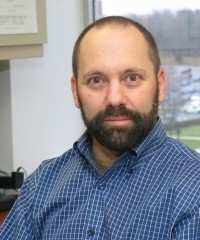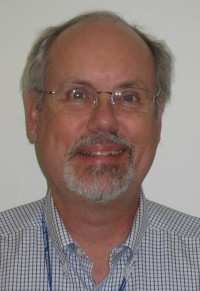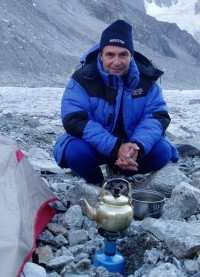Employees Honored For Scientific Work
Three employees of NASA's Goddard Space Flight Center in
Greenbelt, MD, were recipients of the 2010 Robert H. Goddard Award
for Science. The award was bestowed upon Matt Greenhouse, Randy
Kimble and Alexander Moiseev for outstanding work in sciences at
NASA Goddard.

William R. Oegerle, Director of the Astrophysics Science
Division at NASA Goddard said, "These scientists are very deserving
of recognition for their efforts to get the best science out of
three of NASA's premier astronomy missions - Hubble, Fermi, and the
James Webb Space Telescope (under construction). Their success
comes from a deep understanding of both the science and the
instrumentation."
The Goddard Award is named in honor of Robert Hutchings Goddard,
pioneer in the field of rocketry. In 1926, Dr. Goddard's first
liquid fuel rocket was launched in Auburn, Mass. Larger scale
experiments and a skeptical local government made it necessary for
Dr. Goddard, who was to become recognized as the father of the
United States space program, to move to New Mexico in 1930. There,
he carried on a major series of tests until 1942, at which time he
was called to Washington as Chief of Navy Research on jet-propelled
planes. This award has been bestowed on 112 alumni since 1961.
Matthew Greenhouse has served on the James Webb Space Telescope
senior staff as Project Scientist for the Webb telescope science
instrument payload since 1997. He received the award for his
excellent leadership of the Webb telescope instrument teams around
the world. Those teams are located in the U.S., Canada and Europe.
Matt provides scientific oversight for NASA Goddard's contributions
to the Webb telescope in the area of analysis and testing of
detectors and microshutters (an instrument on the telescope), and
works with the instrument teams to ensure instrument problems are
solved and scientific requirements are met.

Matthew Greenhouse
He specializes in infrared imaging spectroscopy, development of
related instrumentation and technologies, flight project science,
and technical management.
Greenhouse graduated from the University of Arizona during 1979
with a Bachelor's of Science degree in Geoscience. He received a
Ph.D. in Physics from the University of Wyoming during 1989. When
he's not working, Matt is an avid sailor in Annapolis, Md. where he
lives with his wife and two children. "It has been an honor and
privilege to work on the Webb telescope," Greenhouse said. "I am
very proud of the performance that its science instrument teams and
the Goddard team have exhibited to bring the integrated instrument
module to the point of flight model testing."
Randy Kimble is currently the Integration and Test Project
Scientist working on the Webb telescope. He was awarded the Robert
H. Goddard award for exceptional achievement in the development of
the Wide Field Camera 3 (WFC3) for the Hubble Space Telescope,
installed in 2009 on Hubble during servicing mission 4. The
performance of the camera in-orbit is remarkable, fully meeting or
exceeding expectations.

Randy Kimble
Randy played a leading role in making sure that high QE NIR
detectors were included in WFC3, as well as overall leadership of
the instrument development. In fact, the Near Infrared (NIR) camera
is more than 40 times more efficient than HST's previous-generation
infrared imager, NICMOS. Randy's research interests are in
astronomical instrumentation, particularly detectors, as well as in
star formation and stellar populations, ultraviolet background
radiation, and the interstellar medium.
When he's not working, Randy enjoys reading, biking, and
softball. He and his wife live in Columbia, MD, and they have two
daughters. "After years of ups and downs for the project (including
a temporary cancellation of the servicing mission in its entirety),
it is very gratifying for the entire WFC3 team to see the camera
working so well and fulfilling its scientific potential in flight,"
Kimble said.
Alexander Moiseev is a lead scientist for the Fermi Space
Telescope's Large Area Telescope (LAT) AntiCoincidence Detector,
one of the LAT subsystems. Moiseev was awarded the Robert H.
Goddard award for development of analysis methods to measure
high-energy electrons with the Fermi LAT instrument. This led to
the unexpected observations that the spectrum of very high energy
electrons is much flatter than expected by conventional models of
electron production and diffusion in the Galaxy. The resulting
paper in Physics Review Letters is the most widely cited Fermi
paper to date.

Alexander Moiseev
His research area and interests include Experimental High Energy
Astrophysics, Cosmic Antimatter, High Energy Gamma-Ray Astronomy,
Experimental Techniques in Particle Physics.
Moiseev involved in several Russian space experiments, and
earned his Ph.D. in 1985 for the experiment onboard Space Station
Salute-7. In 1993 he was one of the initiators of international
antimatter space experiment Pamela. After moving to the U.S. in
1994 he was involved in cosmic ray projects GLAST (since renamed
Fermi) and BESS. When Alex is not working, he is spending most of
his free time on traveling, hiking and mountaineering with his wife
and often his two youngest daughters, with whom he lives in
Potomac, MD.
"It was a big surprise and great encouragement," Moiseev said.
"I am very grateful to Jonathan Ormes who suggested me to pursue
the topic of high energy electrons with the Fermi /GLAST in the
mid-1990s."
The awards were presented on September 8 at NASA Goddard.
 ANN's Daily Aero-Linx (04.15.24)
ANN's Daily Aero-Linx (04.15.24) Classic Aero-TV: 'No Other Options' -- The Israeli Air Force's Danny Shapira
Classic Aero-TV: 'No Other Options' -- The Israeli Air Force's Danny Shapira Aero-News: Quote of the Day (04.15.24)
Aero-News: Quote of the Day (04.15.24) Airborne 04.16.24: RV Update, Affordable Flying Expo, Diamond Lil
Airborne 04.16.24: RV Update, Affordable Flying Expo, Diamond Lil ANN's Daily Aero-Term (04.16.24): Chart Supplement US
ANN's Daily Aero-Term (04.16.24): Chart Supplement US






